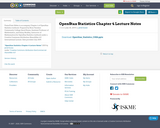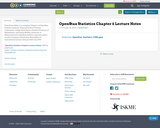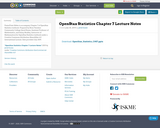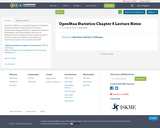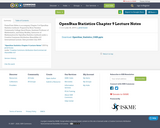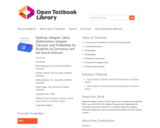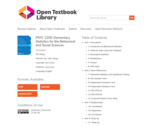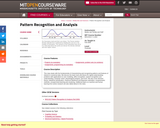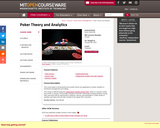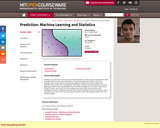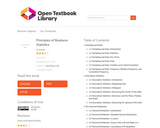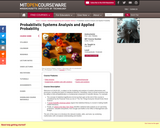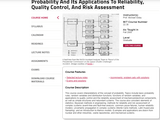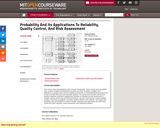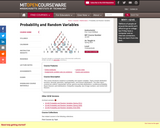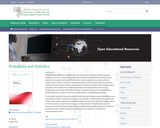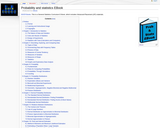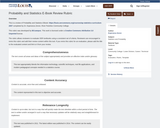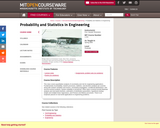You are probably asking yourself the question, "When and where will I use statistics?". If you read any newspaper or watch television, or use the Internet, you will see statistical information. There are statistics about crime, sports, education, politics, and real estate. Typically, when you read a newspaper article or watch a news program on television, you are given sample information. With this information, you may make a decision about the correctness of a statement, claim, or "fact." Statistical methods can help you make the "best educated guess."
Table of Contents
1 Sampling and Data
1.1 Sampling and Data: Introduction
1.2 Sampling and Data: Statistics
1.3 Sampling and Data: Key Terms
1.4 Sampling and Data: Data
1.5 Sampling and Data: Variation and Critical Evaluation
1.6 Sampling and Data: Frequency, Relative Frequency, and Cumulative Frequency
2 Descriptive Statistics
2.1 Descriptive Statistics: Introduction
2.2 Descriptive Statistics: Displaying Data
2.3 Descriptive Statistics: Histogram
2.4 Descriptive Statistics: Measuring the Center of the Data
2.5 Descriptive Statistics: Skewness and the Mean, Median, and Mode
2.6 Descriptive Statistics: Measuring the Spread of the Data
3 The Normal Distribution
3.1 Normal Distribution: Introduction
3.2 Normal Distribution: Standard Normal Distribution
3.3 Normal Distribution: Z-scores
3.4 Normal Distribution: Areas to the Left and Right of x
3.5 Normal Distribution: Calculations of Probabilities
3.6 Central Limit Theorem: Central Limit Theorem for Sample Means
3.7 Central Limit Theorem: Using the Central Limit Theorem
4 Confidence Interval
4.1 Confidence Intervals: Introduction
4.2 Confidence Intervals: Confidence Interval, Single Population Mean, Population Standard Deviation Known, Normal
4.3 Confidence Intervals: Confidence Interval, Single Population Mean, Standard Deviation Unknown, Student's-t
4.4 Confidence Intervals: Confidence Interval for a Population Proportion
5 Hypothesis Testing
5.1 Hypothesis Testing of Single Mean and Single Proportion: Introduction
5.2 Hypothesis Testing of Single Mean and Single Proportion: Null and Alternate Hypotheses
5.3 Hypothesis Testing of Single Mean and Single Proportion: Using the Sample to Test the Null Hypothesis
5.4 Hypothesis Testing of Single Mean and Single Proportion: Decision and Conclusion
6 Linear Regression and Correlation
6.1 Linear Regression and Correlation: Introduction
6.2 Linear Regression and Correlation: Linear Equations
6.3 Linear Regression and Correlation: Slope and Y-Intercept of a Linear Equation
6.4 Linear Regression and Correlation: Scatter Plots
6.5 Linear Regression and Correlation: The Regression Equation
6.6 Linear Regression and Correlation: Correlation Coefficient and Coefficient of Determination
6.7 Linear Regression and Correlation: Testing the Significance of the Correlation Coefficient
6.8 Linear Regression and Correlation: Prediction
